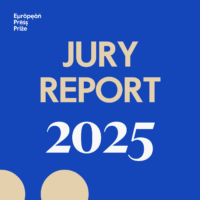Inside our Innovation Category
Journalism is constantly reinventing itself. New tools, new audiences, new ways of telling stories. Every year, journalists across Europe find creative ways to reach people, reveal truths, and rethink what reporting can be. Our Innovation Award exists to celebrate that spirit: the experiments that work, the prototypes that become standards, and the stories that push the journalistic craft forward.
The Innovation Category, shifting focus from year to year as new trends in journalism emerge, salutes reporting, analysis, and technical developments that break new ground both online and offline. Recent Innovation Awards have honoured cross-border data collaborations, groundbreaking investigative techniques, imaginative packaging, and new ways of presenting complex stories to broader audiences. But innovation is not limited to technology. It can mean rethinking an editorial workflow, forming an unexpected partnership, designing a sustainable publishing model, or developing a narrative structure that changes how readers engage with the story.
The European Press Prize Innovation Category is open to any work that pushes boundaries whether in the journalistic process, the final publication, or the way a project is conceived, executed, and shared. If you had the courage to try something completely different, and the skill to bring it to life, this is the place to enter your project.
Some of the most striking examples of boundary-pushing work come from our past Nominees and Winners. These four projects illustrate how differently innovation can take shape and how powerful it can be.
2020: DoR’s pop-up newsroom hits the ground in Transylvania
One of the most memorable winners of the Innovation Award is DoR’s ambitious 2020 project, in which the entire newsroom of 30 people relocated 350 kilometres away from Bucharest to Târgu Mureș for four days to create a fully embedded pop-up editorial operation. Instead of reporting from afar, DoR rebuilt its journalistic process from the ground up: abandoning preconceived story ideas, sourcing topics directly from local residents, experimenting with multiple formats, and producing almost everything on the spot. It challenged the norms of how a newsroom functions, how stories are found, and how communities can shape the coverage about them. Their project offered a powerful alternative to “parachute journalism” by proving what deeply engaged, hyperlocal reporting can look like when a newsroom truly commits to being present.
As DoR’s editor-in-chief Cristian Lupșa explains, the pop-up emerged from questioning whether journalism could do more when it works with a community: “Could journalism be of more immediate service if it’s done alongside the community it covers? Can engagement with the public uncover both citizens’ needs, but also untold stories we usually don’t see? Can we create an experience where the products are not just the published stories, but also the informal chats, the side events, the gatherings?” The project proved that the answer was yes. As Cristian reflects, “some of the most interesting media innovations prioritise engagement, care, connection, and a journalism that is done at a more human scale.”
2021: Maldita.es tackles disinformation with a WhatsApp chatbot
The 2021 Innovation Award recognised Maldita.es for developing a WhatsApp chatbot that reimagined how fact-checking can operate inside private messaging spaces — one of the most opaque and fast-moving environments for misinformation. Instead of treating WhatsApp as a closed channel, Maldita.es built a tool that could automatically detect false content in any format, respond to users with verified information, and map emerging disinformation trends without collecting personal data. By blending journalism with natural-language technology, the chatbot became both a real-time public service and an internal engine that strengthened the newsroom’s workflow, enabling fact-checkers to prioritise, classify, and track misinformation with far greater speed.
As Clara Jiménez Cruz, CEO of Fundación Maldita.es, observes, innovation is now essential to meeting audiences where they are: “In the current ecosystem, understanding journalism from an innovation perspective is key to reach audiences and make a difference in the extremely competitive environment for people’s attention.” For Maldita.es, that meant experimenting with new formats and technological solutions that free journalists to focus on what matters most. As she puts it, “whether we are talking about new formats, technological implementations that enable journalists to focus on what’s really important or new ways of using AI applied to journalism; recognising those innovations can serve as inspiration and ideas for other newsrooms across the continent.”
During the COVID-19 pandemic, the chatbot offered a direct way for millions of people to check the truth at the very moment they encountered a rumour or a lie. WhatsApp itself later described it as the most advanced fact-checking chatbot ever built for the platform.
2023: OCCRP’s cross-border project exposes hidden wealth
The 2023 Innovation Award went to the Russian Asset Tracker, a landmark collaboration led by OCCRP and The Guardian with 24 international partners, which redefined what cross-border investigative journalism can achieve under extreme time pressure. In the weeks before Russia’s full-scale invasion of Ukraine, the team built the most comprehensive public database of assets held outside Russia by oligarchs and figures close to the Kremlin, tracing ownership through offshore structures and verifying every detail to courtroom standards.
Its innovation lies not only in scope, but in method: a philosophy captured by OCCRP editor-in-chief Miranda Patrucic, who reminds us that “investigative reporting is no longer just about writing; it’s about designing an experience.” For her, innovation starts with refusing to equate depth with length: “We have to abandon the idea that gravity equals word count. In a world of fragmented attention, we need to move readers from simply ‘reading’ the news to ‘experiencing’ the investigation.” That mindset shaped the project’s design. Miranda notes that sometimes a traditional narrative isn’t the most effective: “If we want to expose a complex systemic failure, a simulation game that forces the user to face the friction of that system is often more powerful than 5,000 words of text.” And when a story demands proof or emotional clarity, “visual investigations can do the heavy lifting that narrative cannot.”
“Innovation isn’t about using gimmicks; it’s about picking the right vehicle for the truth. Whether it’s a corporate map, a video, or an interactive game, the format must be determined by the audience’s understanding, not by newsroom tradition.” In the midst of an evolving geopolitical crisis, the Russian Asset Tracker demonstrated how collaborative journalism can expose hidden systems of power with unprecedented speed and transparency.
2025: Follow the Money maps glyphosate use from space
The 2025 Nominee by Follow the Money and its regional partners stands out for transforming a long-running environmental concern into a data-driven accountability tool. Using European Space Agency satellite imagery, the team built an original algorithm capable of detecting glyphosate-sprayed fields nationwide, turning the landscape’s brief yellow tint into evidence. By cross-referencing these findings with groundwater protection zones, Natura 2000 areas, schools, and playgrounds, the project exposed how closely chemical use sits to people’s daily lives and how little official monitoring has kept pace.
As reporter Jan Daalder explained, “We already know glyphosate use is rampant in the Netherlands. But how rampant exactly? And where exactly do farmers use it? We could only find out using a novel approach with satellite data. In fact, our article resulted in a peer-reviewed scientific paper that concluded that the method was ‘the first’ to ‘detect glyphosate application using remote sensing at a national scale.’”
This work exemplifies innovation expanding journalism’s reach: a new method, built inside a newsroom, creating knowledge that did not exist before, and reshaping the national conversation about environmental risk and public health.
As audiences shift, technologies evolve, and misinformation spreads faster than legacy systems can respond, journalists need new methods, new tools, and new ways of reaching the public. The projects highlighted above show what happens when teams dare to rethink the familiar: they uncover what was previously invisible, involve communities more deeply, and expand what journalism can accomplish.
The Innovation Award exists to recognise such willingness to experiment, to refine, and to invent. If your work has opened a new path in how stories are found, shaped, or delivered, we encourage you to put it forward.





